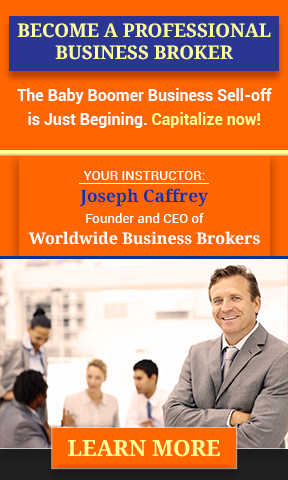Selling to Employees
Selling to employees? If you’re a business owner, selling to employees is an excellent way to exit your business, particularly if your objectives when selling include preserving your legacy. And if you’re a business broker, this is a discussion you should have with the owners of the appropriate companies as you help them in their exit planning. Depending on the jurisdiction of the business, there are different legal structures used to accomplish a transfer of ownership to employees. For example, in the United States, a popular program is an ESOP – an Employee Stock Ownership Plan – while in the United Kingdom it is an Employee Ownership Trust. But the concept is the same, no matter the name or jurisdiction.
According to the National Center for Employee Ownership, as of today (2020), there are about 6,600 employee stock ownership plans (ESOPs) covering more than 14 million participants.
Between 65% and 70% of ESOPs were set up to provide a ready market for the shares of a departing owner of a profitable, closely held company. Most of the remainder are used either as a supplemental employee benefit plan or as a means to borrow money in a tax-favored manner. More than 90% of these plans are in privately-held companies.
Using this approach, the private company can make tax-deductible cash contributions to the ESOP to buy out an owner’s shares, or it can have the ESOP borrow money to buy the shares
Though there are many things to consider when planning an exit – and employee ownership may not offer the seller the ideal way out – there are certain advantages that this exit strategy offers business owners over others. Let’s look at a few of them.
Depending on the jurisdiction of the business, there are different legal structures used to accomplish a transfer of ownership to employees. For example, in the United States, a popular program is an ESOP – an Employee Stock Ownership Plan – while in the United Kingdom it is an Employee Ownership Trust. But the concept is the same, no matter the name or jurisdiction.
According to the National Center for Employee Ownership, as of today (2020), there are about 6,600 employee stock ownership plans (ESOPs) covering more than 14 million participants.
Between 65% and 70% of ESOPs were set up to provide a ready market for the shares of a departing owner of a profitable, closely held company. Most of the remainder are used either as a supplemental employee benefit plan or as a means to borrow money in a tax-favored manner. More than 90% of these plans are in privately-held companies.
Using this approach, the private company can make tax-deductible cash contributions to the ESOP to buy out an owner’s shares, or it can have the ESOP borrow money to buy the shares
Though there are many things to consider when planning an exit – and employee ownership may not offer the seller the ideal way out – there are certain advantages that this exit strategy offers business owners over others. Let’s look at a few of them.
• Leaving Gradually
Setting up an employee ownership program allows an owner to gradually transfer ownership to the employees over time. This provides the owner with the ability to begin the process of liquidating his or her equity while also participating in the continued – and in many case, the accelerated – growth of the business – and the resultant increase in value over time – which oftentimes results from employee ownership.
Proper planning for exiting a closely-held business would ideally begin three years before the owners plan to walk away, at minimum, regardless of the method used. But if using an employee ownership program was the preferred way out, owners might set such a program up much earlier because it generally helps in recruiting, as well as with employee retention and motivation.
• Employee Retention
 Similar to other benefits – such as vacation time and medical plans – how soon after becoming employed by the company an employee would qualify for the employee ownership program can vary.
Similar to other benefits – such as vacation time and medical plans – how soon after becoming employed by the company an employee would qualify for the employee ownership program can vary.
Depending on how the plan is structured, profit sharing, in the form of dividends, can be hugely attractive, particularly when recruiting employees.
When employees leave the company, they receive their stock, which the company must buy back from them at its fair market value (unless there is a public market for the shares). Private companies must have an annual outside valuation to determine the price of their shares.
Offering an employee ownership program is a strong incentive to retain the most valuable employees. The owners of a Manchester, UK, marketing firm set up an employee ownership trust about three years ago and, according to one of those owners, “…churn has dropped through the floor.”
• Employee Motivation
From a business valuation standpoint, any business needs its employees to be engaged and to have “bought in” to the business. But getting employees to “buy in” is rarely an easy task. With an employee ownership program, that buy-in is literal.
When employees know they’re owners, they generally begin to act as owners to the benefit of the company generally, positively impacting company performance, thus increasing value for all owners. A 2000 Rutgers University study found that companies with ESOPs grow 2.3% to 2.4% faster after setting up their ESOP than would have been expected without it.
_____________________________________________________________________________
Our course, The Basic “How-To” of Becoming a Business Broker”, teaches how to market and sell businesses.
Become a Professional Business Broker…
• Tax Benefits
There may be tax benefits – capital gains for the sellers; income for the employees – to this approach, depending on where you are and the tax regimes in effect at the time the employee ownership program is set up.
If you’re a broker advising the owner of a business, this is where you call in one of the other talents critical to the business owner’s exit strategy. Any tax benefits that might accrue to the owners as they divest their interest or to employees as they qualify for the employee ownership program, must be identified up front.
From the owners’ standpoint, this will help them when determining how best to set the program up. From the employees standpoint, it’s important to be able to clearly explain the benefit.
• Seller’s Legacy
Some sellers are interested in only one thing when selling: how much money will they walk away with and whether that amount will be adequate to fund the post-closing lifestyle they hope to have.
On the other hand, we’ve found that founders are often as interested in their legacy as they are in the monetary value of the transaction. They want what they’ve built to survive and thrive after they’ve gone on to enjoy the fruits of their hard work. An employee ownership program, which will generally keep the business’ trusted management in place, is more likely to accomplish that.
Business owners – particularly founders – very often feel that their identity is their business. Selling is an emotional process as much as a financial one. While talk of multiples, valuations and earn outs can feel like distant concepts, the reality of moving on is visceral. If the business has been built from scratch, a sale can be life changing. Knowing that the business has a continuity of management will give departing owners some sense that what they’ve built will be well-cared for in the immediate aftermath of that departure.
The Bottom Line
 Selling to employees can be done as an outright sale – as in most third-party transactions – or over time using stock options and vesting periods as well as ESOPs. But selling to employees using an employee ownership program has a number of advantages that any business owner who is considering selling to employees would be wise to learn about.
If you’re a business broker and plan to have an exit planning discussion with any of your business-owning clients, you can learn more about ESOPs here. But always make sure that you advise your clients to consult with their tax professional and a business or transaction attorney – not a divorce or traffic lawyer! – before any decision is made.
Selling to employees can be done as an outright sale – as in most third-party transactions – or over time using stock options and vesting periods as well as ESOPs. But selling to employees using an employee ownership program has a number of advantages that any business owner who is considering selling to employees would be wise to learn about.
If you’re a business broker and plan to have an exit planning discussion with any of your business-owning clients, you can learn more about ESOPs here. But always make sure that you advise your clients to consult with their tax professional and a business or transaction attorney – not a divorce or traffic lawyer! – before any decision is made.
 #business #businessacquisition #sellabusiness #becomeabusinessbroker #businessbrokering #businessvaluation #MergersandAcquisitions
#business #businessacquisition #sellabusiness #becomeabusinessbroker #businessbrokering #businessvaluation #MergersandAcquisitions
